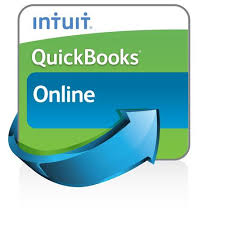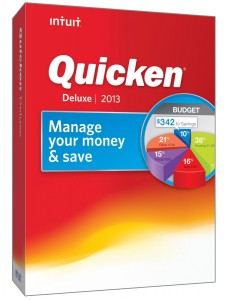Intuit Updates its ‘Quick Start’ Guide for Quickbooks
 Intuit has updated its Quick Start guide for Quickbooks accounting software. Whether you are a business owner, accountant, tax preparer, or anyone else who uses this popular accounting software, you should take note of the recent changes made to the Quick Start guide.
Intuit has updated its Quick Start guide for Quickbooks accounting software. Whether you are a business owner, accountant, tax preparer, or anyone else who uses this popular accounting software, you should take note of the recent changes made to the Quick Start guide.
So, what kind of changes did Intuit make to its Quickbooks Quick Start guide? The new guide, found at http://qboblog.qbcontent.com/wp-content/uploads/2013/09/QuickBooks-Online-Quick-Start-Guide-2015.pdf, is roughly 11 pages in length and covers a wide variety of topics, ranging from basic tutorials like how to create and send invoices, to more advanced topics like using Quickbooks on the go, as well as Quickbooks-compatible apps.
You might be wondering why Intuit felt the need to update its Quick Start guide. Well, one of the reasons is likely the growing focus on its cloud-based accounting software Quickbooks Online. Many users prefer Quickbooks Online due to its simplicity and convenience. Unlike the desktop versions of the software, Quickbooks Online can be accessed and used from any Internet-connected computer or device. Whether you are sitting in your office or hundreds of miles away on vacation, you can access Quickbooks via a secure online login portal.
But Quickbooks Online isn’t the only version of the accounting software that offers the benefits of cloud computing. Hosted Quickbooks, such as the service offered here at MyVao also leverages the power of the cloud. Hosted Quickbooks differs from Quickbooks Online in the sense that it’s actually the desktop version “hosted” by an authorized third-party organization. This means users have access to all of the features in desktop Quickbooks while still being able to access and use the software online.
Of course, Intuit offers several ways for new users to learn about Quickbooks, only one of which is the convenient Quick Start guide. As noted in a blog post by the company, users can access the Tutorial Center to view more than 50 videos that covers everything from adding another user to your account (e.g. an accountant), to money out tasks, recording expenses, sales receipts, estimates, online banking, payroll, and more.
What do you think of the new Quick Start guide for Quickbooks? Let us know in the comments section below!
Quickbooks to Support Integration With Shopify
 Intuit’s cloud-based accounting service Quickbooks Online will soon support integration with the e-commerce platform Shopify.
Intuit’s cloud-based accounting service Quickbooks Online will soon support integration with the e-commerce platform Shopify.
The two companies announced the news earlier this month, saying that Shopify, which currently has more than 200,000 merchants, will become integrated with Quickbooks Online. The joint partnership is designed to enhance the accounting experience for merchants, allowing them to add transactions, create invoices, and update their financial information from a single convenient location.
When speaking to reporters, Intuit’s Matt Kanas referred to the partnership as being an “important component” of Intuit’s commitment to fostering the success of small-to-medium-sized businesses in Canada. Of course, Shopify has its roots in Canada, with the company being founded in 2004 by Tobias Lutke in Ottawa, Ontario. It initially began as a small, in-house platform for Lutke and his team to use to sell snowboards, but Shopify soon grew into something much larger.
Today, Shopify remains one of the world’s leading platforms for e-commerce and online retailers. Using the software, business owners can create fully functional online stores through which customers can purchase their products.
So, when can you expect to see Quickbooks Online offering support for Shopify transactions? There’s still no official word yet on when the changes will be made, although it’s safe to assume it will happen within the next year. Once the changes have been made, Intuit says that all transactions made in the user’s Shopify account will be automatically transferred to their Quickbooks Online account, allowing for seamless accounting that minimized errors while improving efficiency and overall productivity.
“We are excited to be partnering with QuickBooks Online to provide the tools and resources small and medium-sized businesses need to handle all of their accounting needs efficiently,” said Harley Finkelstein, Shopify’s chief platform officer. “Many of our merchants are not necessarily experts on bookkeeping, which is why this integration is so important to their success.”
What are your thoughts on the partnership between Shopify and Quickbooks? Let us know in the comments section below!
How to Print all Invoices in Quickbooks
 Looking to print all of your invoices using the Quickbooks accounting software? If you are reading this post, I’m assuming the answer is yes. If you just recently launched your small business, you may not have many invoices, in which case you can print them individually. But if your business has been operational for any prolonged length of time, this isn’t a viable option.
Looking to print all of your invoices using the Quickbooks accounting software? If you are reading this post, I’m assuming the answer is yes. If you just recently launched your small business, you may not have many invoices, in which case you can print them individually. But if your business has been operational for any prolonged length of time, this isn’t a viable option.
Thankfully, there’s a simple way to print multiple invoices using Quickbooks. But before you proceed, you should first check to make sure that all of your invoices are “flagged” for batch printing. Without the invoices being flagged, you won’t be able to print them in batches.
To print multiple invoices, log into your Quickbooks account, click on the + sign > Invoice > complete the form > and click Save. Sorry if you were expecting more, but that’s all it takes to print multiple invoices using Quickbooks!
Of course, some users may wish to email their invoices or sales transactions, in which case you should click the Transactions menu in the upper left menu, followed by Sales. Next, select Type of transaction, Status and Delivery Method in the Filter column. Make a check next to each transaction that you would like to email. In the Batch Actions drop-down menu, choose Send Transaction to email them. If you wish to print them instead, however, you can select the Print Transactions option.
It’s important to note that all transactions will show up under the Sales Transaction section of your Quickbooks software. When emailing the transaction, you can check to see if it needs editing to include the email address on the actual transaction. This is done by double clicking the invoice form the Sales Transaction menu, at which point you can enter next text or modify existing text to reflect the recipient’s email address. When you are finished, click Save and Close to complete the process and return back to the Sales Transaction menu.
Note: you can also email an invoice or sales transactions to multiple recipients. Just separate the recipient’s address with a comma.
Did this tutorial work for you? Let us know in the comments section below!
Intuit Reports Strong Q1, Thanks to Quickbooks Online
 While Intuit’s reported a first quarter loss of $29 million, the popular accounting software maker is going strong, thanks in part to its Quickbooks Online service.
While Intuit’s reported a first quarter loss of $29 million, the popular accounting software maker is going strong, thanks in part to its Quickbooks Online service.
As noted by Intuit President and CEO Brad Smith, Intuit has continued with “strong momentum” throughout the year, exceeding its projected number of subscribers and financial targets for Q1.
“We started the fiscal year the same way we ended the last, with strong momentum across our businesses as our intense focus on our global cloud strategy takes shape,” said Brad Smith, Intuit’s president and chief executive officer. “We exceeded our subscriber and financial targets in the first quarter and have raised our earnings per share guidance for the fiscal year based on these initial strong results and our acceleration of share repurchases in the quarter.”
Of course, one of the reasons why Intuit is doing so well is because of Quickbooks Online. Quickbooks Online is the company’s signature cloud-based accounting software. Unlike the desktop versions of Quickbooks, Quickbooks Online lives up to its namesake by being completely hosted on the cloud. This means users can access the software anywhere, anytime — assuming they have access to an Internet-connected computer or compatible device.
To put the popularity of Quickbooks Online into perspective, Intuit reported a 57% growth in its subscriber base through the first quarter. This means that more than 1.16 million people are now subscribed to the online accounting service. Other interesting findings released by Intuit indicate its small business revenue increased by 5%, and its payroll customers increased by 17% through the first quarter.
But just because it’s popular doesn’t necessarily mean that it’s best the choice. Quickbooks Online is undoubtedly convenient and easy to use. The problem, however, is that it lacks many of the key features and functions found in the desktop version of Quickbooks. So, how are you supposed to take advantage of the accounting power of Quickbooks while still being able to access it online? The answer is Hosted Quickbooks.
Hosted Quickbooks is essentially the desktop version of the software that’s hosted online by an authorized third party. This means users can enjoy all of the features of the desktop version while still being able to access it online.
What do you think of Quickbooks Online? Let us know in the comments section below!
5 Signs that it’s Time to Outsource Your Accounting
 #1) You Spend More Time Doing Accounting than Running Your Business
#1) You Spend More Time Doing Accounting than Running Your Business
Granted, you can expect accounting to take up some of your time, but it shouldn’t consist of the bulk of your workday. If you are spending more time accounting than running your business, it’s probably time to hire a professional accounting. By freeing up more time, you can focus on other aspects of your business.
#2) You Don’t Back Up Your Data
If your hard drive way wiped clean today, would your business be able to survive? Business owners who fail to perform regular back ups of their data place themselves at risk for a critical data loss. But when you’re busy doing all of the tasks that go into running a business, how are you supposed to perform back ups? Thankfully, this is a task that most professional accountants will gladly perform, protecting your business from data loss.
#3) You are Making Too Many Mistakes
No matter how hard you try to prevent it, mistakes are bound to occur when entering financial data into your preferred accounting software. However, if you are making multiple mistakes on a regular basis, you should consider outsourcing the task to a professional accountant. Accountants have the skills and tools necessary to keep track of your transactions — and accurately. This doesn’t necessarily mean that an accountant will do it without ever making mistake, but errors are usually few and far between.
#4) You are Still Using a Word Processor for Accounting
Sure, you can technically use Microsoft Word or even Notepad to keep track of your financial transactions, but just because you can use a word processor doesn’t mean it’s the best choice. Hiring a professional accountant will allow you to utilize the power of modern accounting software like Quickbooks, which can make a world of difference in terms of your accounting operations.
#5) You Don’t Have the Time to do Accounting
Last but not least, if you don’t have the time to keep track of each and every financial transaction that pertains to your business, it’s probably time to hire an accountant. They’ll take this burden off your shoulders, ensuring your financial data is accurate and up to date.
Did we leave anything out? Let us know in the comments section below!
Quickbooks Tip: How to Lock a Previous Year
 Intuit’s Quickbooks remains the world’s most popular and widely used accounting software for small business owners. It’s fast, versatile, easy to use, and it’s loaded with features. But if you’re looking for an option to “lock” a previous year, you may not find one, and here’s why.
Intuit’s Quickbooks remains the world’s most popular and widely used accounting software for small business owners. It’s fast, versatile, easy to use, and it’s loaded with features. But if you’re looking for an option to “lock” a previous year, you may not find one, and here’s why.
Normally, accountants and small business owners lock their accounting at the end of the year (or beginning of the following year). This is done to prevent the accidental alteration of existing transactions or the addition of new transaction. If you accidentally add a new transaction to the previous year, it will throw off your entire balance, forcing you to go back and identify/fix the problem. Quickbooks, however, takes a different approach by eliminating the need for locking end-of-year transactions.
Any data that you enter into Quickbooks is there to stay. Some people may find this to be confusing, as you are unable to lock a previous year. However, the vast majority of users (myself included) find this to be helpful since you can go back to fix dependencies or other problems at any time, regardless of whether or not the year has passed.
There are some problems associated with Quickbooks’ stance on keeping financial transactions logged, one of which is the potential for an accountant to modify transactions after the company has already filed their taxes. Even small changes could result in major discrepancies — something that you probably want to avoid after filing your taxes. So, how do you prevent this from happening in your Quickbooks account?
The easiest solution is to use the software’s Set CLosing Date and Password commands. After logging into your Quickbooks account, choose Edit > Preferences > Accounting > Company Preferences. Next, click on the option titled “Set date/password,” at which point you can specify the date for which you would like to close off the transactions. You must also specify a password for this “lock date.” Changes can still be made to the locked date period, although the user must enter the password specified here.
Did this tutorial work for you? Let us know in the comments section below!
What is Hosted Quickbooks and Why Should I Choose It?
 Thinking about investing in the Quickbooks accounting software? If you are reading this, I’m going to assume the answer is yes. Quickbooks has become the world’s most popular accounting software for small business owners and professional accounts alike, and for good reason: it’s fast, versatile, and loaded with helpful features. But one of the decisions you’ll have to make is whether to choose desktop Quickbooks, Quickbooks Online, or Hosted Quickbooks.
Thinking about investing in the Quickbooks accounting software? If you are reading this, I’m going to assume the answer is yes. Quickbooks has become the world’s most popular accounting software for small business owners and professional accounts alike, and for good reason: it’s fast, versatile, and loaded with helpful features. But one of the decisions you’ll have to make is whether to choose desktop Quickbooks, Quickbooks Online, or Hosted Quickbooks.
Hosted Quickbooks Defined
Hosted Quickbooks is essentially the Desktop version that’s “hosted” by an authorized third-party or vendor. Many people assume that Quickbooks Online is the best choice, but this isn’t necessarily true. Desktop Quickbooks offers more features and a higher level of functionality, making it the preferred choice among business owners.
The problem with the standard version of Desktop Quickbooks, however, is that it’s restricted to a local machine (e.g. your computer). If you frequently travel and accidentally leave your laptop at home, you won’t be able to access your account. Thankfully, problems such as these are easily avoided with Hosted Quickbooks.
Access Quickbooks Anywhere, Anytime
With Hosted Quickbooks, you can access your account anywhere, anytime — as long as you have access to the Internet. All of your data is stored on a secure server that’s managed by an authorized third-party through Intuit’s Hosting Program. So whether you in the office or hundreds of miles away on vacation, you can access all of your financial records from any Internet-connected computer or device.
Automatic Backups
Another benefit of using Hosted Quickbooks is the simple fact that all of your data is backed up to the cloud automatically. Assuming you use the standard, non-hosted version of Quickbooks, you could place your business at serious risk in the event that your primary computer or storage device is stolen. Hosted Quickbooks, however, protects against data loss by automatically backing up your data to the cloud.
Enhanced Support
Need another reason to choose Hosted Quickbooks? With other versions of the popular accounting software, you are typically restricted to receiving Intuit’s support. This isn’t necessarily bad, but you can receive an even greater level of support by choosing Hosted Quickbooks. Doing so will allow you to reach out to either Intuit or the hosting company in the event that you need technical support.
How to Add Logo to a Quickbooks Invoice
 As a business owner, you probably want to display your brand material on any and all documents possible. Whether it’s your business card, website, social media accounts, or billing invoices, it’s important to display your brand material, such as your logo for instance. Thankfully, Quickbooks offers a quick and easy way to integrate your brand logo onto invoices. Here’s how you do it.
As a business owner, you probably want to display your brand material on any and all documents possible. Whether it’s your business card, website, social media accounts, or billing invoices, it’s important to display your brand material, such as your logo for instance. Thankfully, Quickbooks offers a quick and easy way to integrate your brand logo onto invoices. Here’s how you do it.
To add your logo to an invoice template, log into your Quickbooks account and open the Basic Customization window. Next, select the “Use Logo” checkbox under the Basic Customization window. Assuming this is your first time using a custom logo, you’ll have the option to select one. Browse through your files and choose your brand’s logo. It’s recommended that you use a square-shaped logo for best results, as Quickbooks uses this native format. Even if you don’t use a square logo, though, Quickbooks will automatically reshape and resize it accordingly.
After selecting your logo, click the Open button to return back to the Basic Customization window and preview your logo. If you wish to see how it looks in person, you can click the Print Preview button. When you are happy with your logo, click OK to save the changes and close your session. Sorry if you were expecting more, but that’s all it takes to set up a logo on your Quickbooks invoices!
Of course, some users may wish to reposition their logo. By default, Quickbooks includes logos on the upper left corner of invoices and forms. You can change this position, however, in just a few basic steps. To do this, open the Layout Designer, select your logo in the upper left corner, and then drag and drop it to the desired location. Depending on the current layout of your invoice, you may have to move and adjust some of the existing elements to make room for the logo. When you are finished click OK to complete the changes and you are done.
Did this tutorial work for you? Let us know in the comments section below!
Intuit Launches Quicken 2016: What You Should Know
 It wasn’t long ago when Quicken was the preferred choice of accounting software among small business owners and professional accountants. It offered an easy-to-use, versatile, and fast interface to accommodate the needs of all users. But the popularity for Quicken gradually died off as users switched to Quickbooks. Well, it appears that Intuit has revived its Quicken software, as the company recently launched a new Quicken 2016 product.
It wasn’t long ago when Quicken was the preferred choice of accounting software among small business owners and professional accountants. It offered an easy-to-use, versatile, and fast interface to accommodate the needs of all users. But the popularity for Quicken gradually died off as users switched to Quickbooks. Well, it appears that Intuit has revived its Quicken software, as the company recently launched a new Quicken 2016 product.
Quicken was originally launched more than three decades ago, a time when accountants — most, at least — were using paper files to keep track of their clients’ finances and spending habits. As such, this paved the way for new, more efficient solutions, such as Intuit’s Quickbooks line of software.
As noted by USA Today, Quicken 2016 remains relatively the same in terms of features and mechanics when compared to its predecessors. But don’t let that fool you into thinking it’s the same product with a different name. Intuit has enhanced the experience for users, streamlining common processes so they are easier and less time-consuming to perform.
When announcing Quicken 2016, Eric Dunn said the software has new features for PC and Mac users which remove some of the otherwise confusing and complex problems associated with paying bills.
“We’re working harder and smarter than ever to delight customers,” said Eric Dunn, senior vice president and general manager of Quicken. “Quicken 2016 affirms our commitment to listening to our customers and helping them achieve financial success at every life stage. Our new features for Mac and Windows users help remove some of the complexity around managing and paying bills. Looking ahead, our goal is to add capability and enhancements to Quicken products that extend the ability for users to easily manage their money across devices.”
Here are some of the additions that you can expect to see in Quicken 2016:
- Mobile app companion for Apple and Android devices.
- Manage complex financials and tax planning.
- Manage bills from the Quicken register.
- Set up alerts to receive reminders for bills, low balanced, etc.
- Track budgets for monthly or seasonal expenses.
- Creates savings goals to cut back on unnecessary expenses.
- And more…
What are your thoughts on Quicken 2016? Let us know in the comments section below!
How to Make Adjusting Journal Entries in Quickbooks
 Journal entries are a key component of the Quickbooks ecosystem. While most users are familiar with them, you may not know about adjusted journal entries.
Journal entries are a key component of the Quickbooks ecosystem. While most users are familiar with them, you may not know about adjusted journal entries.
What is an Adjusted Journal Entry?
An adjusted journal entry, in the most basic definition, is a journal entry that’s made after an event has taken place For instance, an accountant may have to go back and make adjustments for sales payable on interest or penalties. Because the entry has already been made, a new “adjusted entry” must be created.
Keep in mind that the use of adjusted journal entries varies depending on the specific version of Quickbooks that you are using. Most versions of Quickbooks will feature have a checkbox for “Adjusting Entry,” which can be ticked to create a new adjusted journal entry. With Quickbooks Pro and Premier editions, however, this option isn’t there by default, unless the specified transaction was marked previously as an adjusted entry in a version of Quickbooks that supports this feature.
Making an Adjusted Journal Entry
To make an adjusted journal entry, you’ll need to open the accountant menu and then click Make General Journal Entries. Next, fill in the information about the entry, including the date of transaction, entry number, etc. When you are finished, click the “Adjusting Entry” checkbox — do not skip this step; otherwise, you will create a standard journal entry instead of an adjusted entry.
When creating an adjusted journal entry, you’ll see a detail area. Here, you should enter the first account that’s associated with the transaction, debit, credit, memo, name or class. Keep entering the distribution lines until the transaction goes to a $0 balance, at which point you can save the entry. Sorry if you were expecting more, but that’s all it takes to make an adjusted journal entry in Quickbooks!
How to View Adjusted Journal Entries
Want to view your newly created adjusted journal entry? You can do so in just a few easy steps. Once you’ve created the adjusted journal entry, go to Reports > Accounts & Taxes > Adjusting Journal Entries. Now search for the date range associated with the new entry, click refresh, and it should be revealed. From here, you can also choose to print the adjusted journal entry.
Did this tutorial work for you? Let us know in the comments section below!
